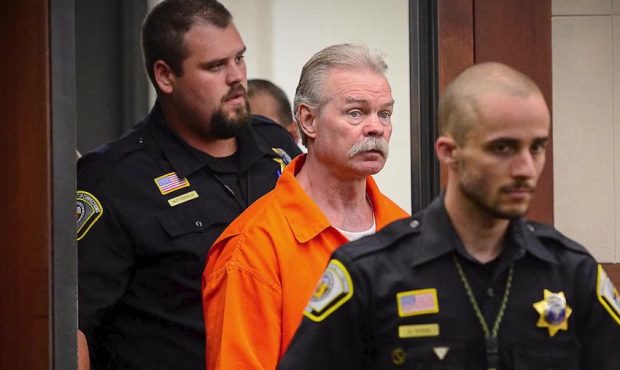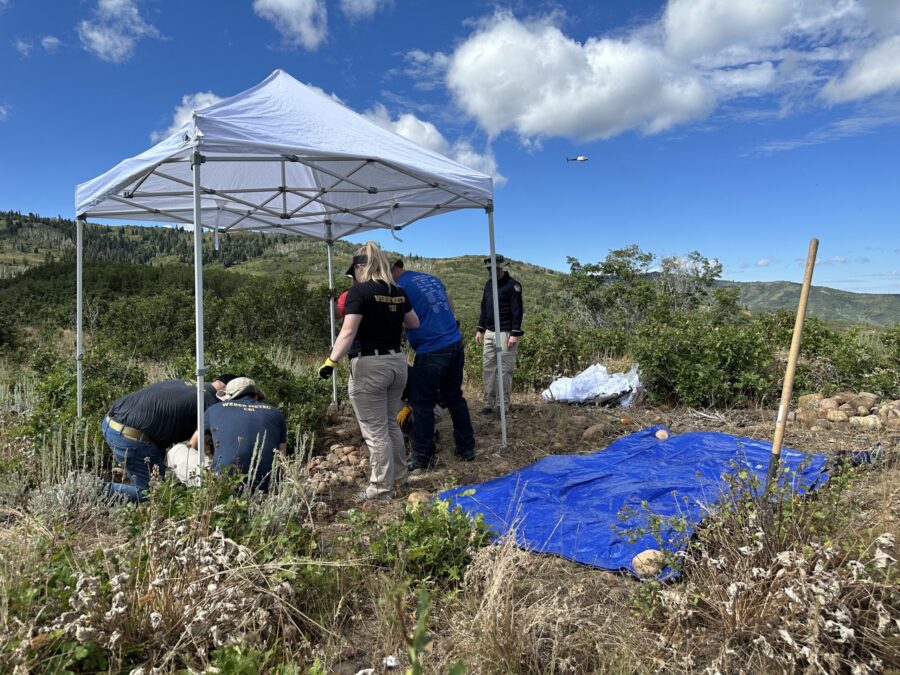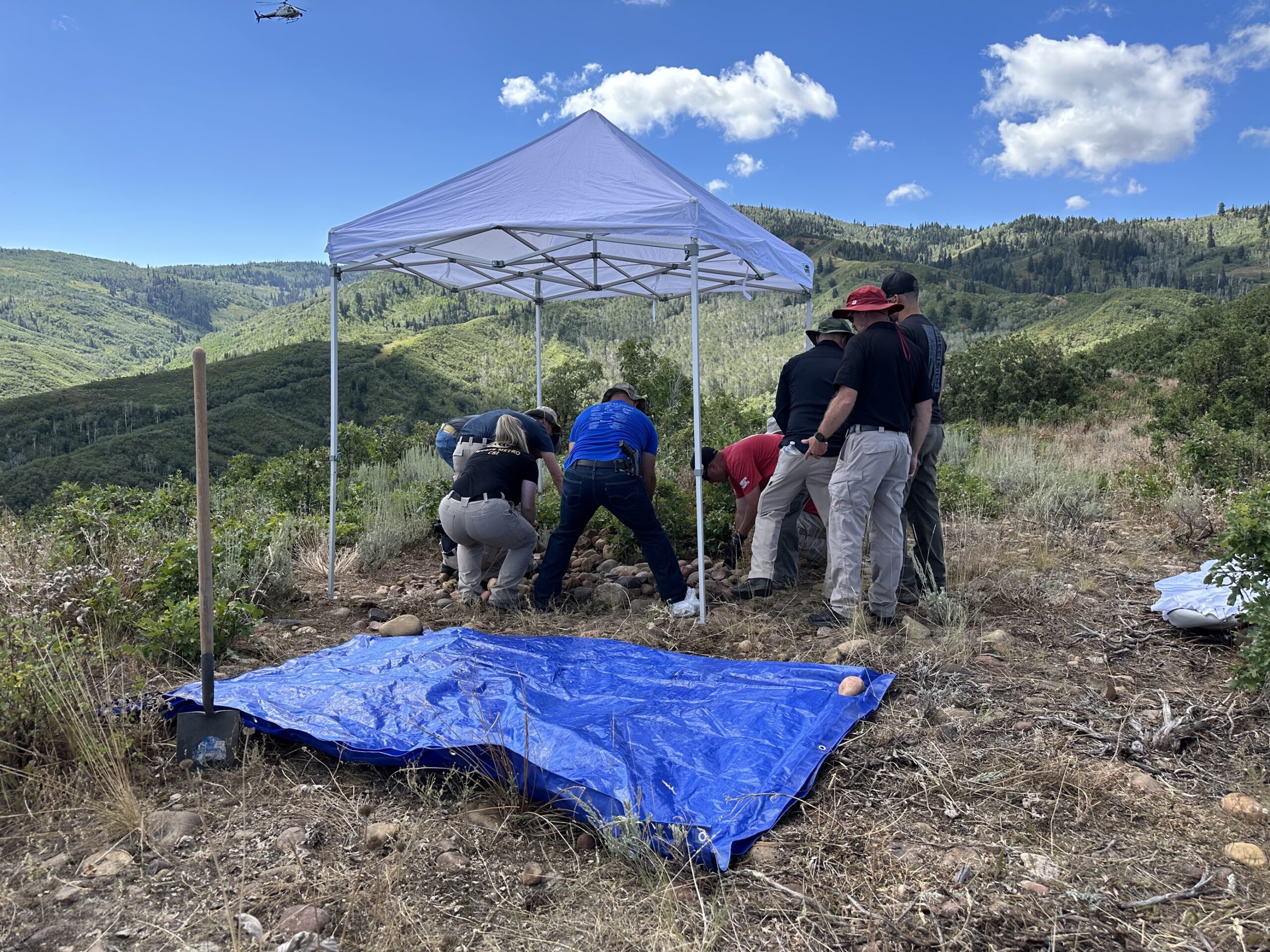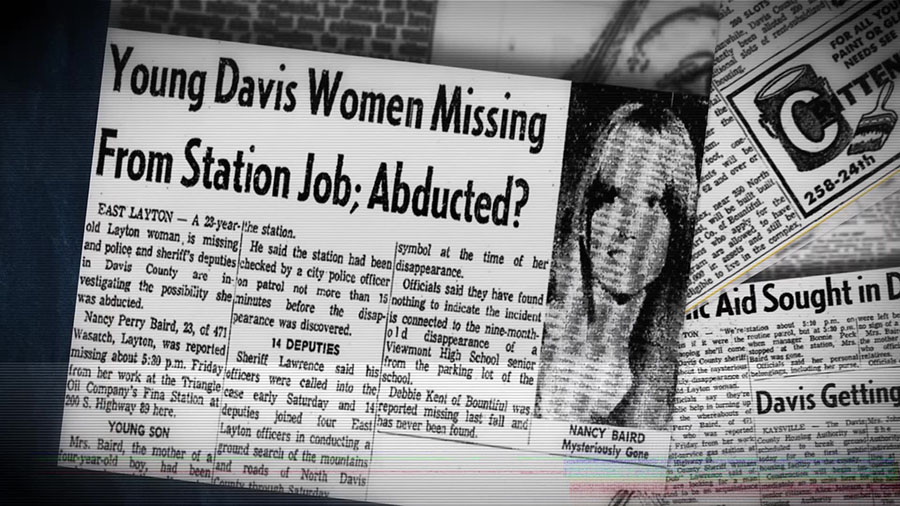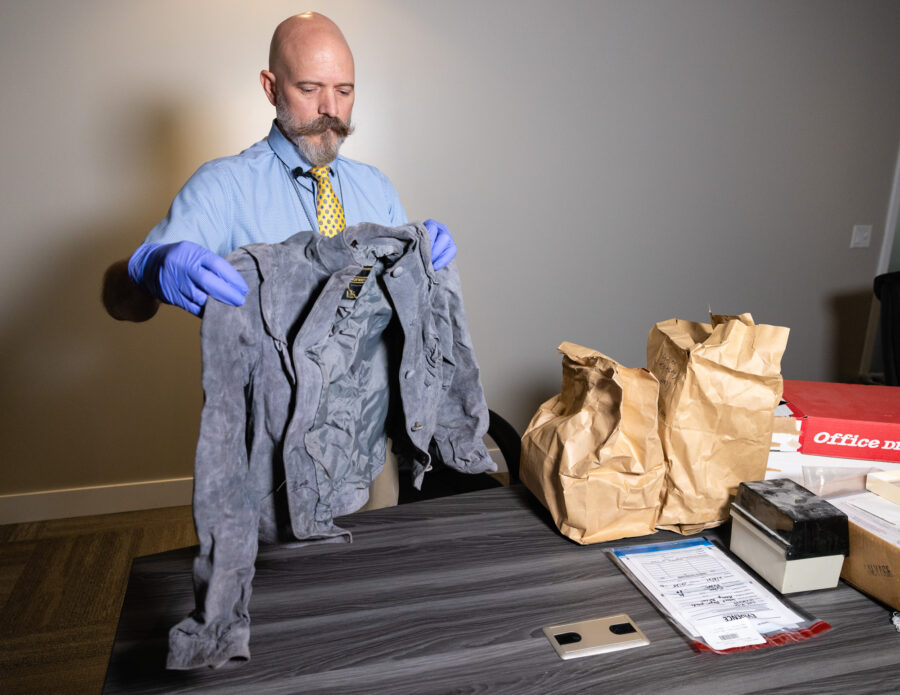She Was Never There: Detective Reflects On Search For Joyce Yost 28 Years Later
May 25, 2021, 10:13 PM | Updated: May 26, 2021, 9:14 am
HUNTSVILLE, Utah — The South Ogden police officer who for years led the investigation into the 1985 disappearance of Joyce Yost does not believe the man twice sentenced to die for killing Yost has ever been honest about the location of her body.
“She’s not within an acre of where he says,” former police Sgt. Terry Carpenter said in an April, 2021 interview for the KSL investigative podcast series COLD. “She was never there.”
Yost’s body has never been located or recovered. COLD’s second season focuses on the investigation into her disappearance and murder.
Douglas Lovell’s Plea Deal
Douglas Lovell killed Yost on the night of Aug. 10, 1985, to prevent her from testifying against him in a sexual assault case. He was convicted of the sexual assault, even in Yost’s absence, in December 1985 and was sentenced to a term of 15 years-to-life in prison.
Police were at first unable to link Lovell to Yost’s disappearance. But in 1991, Lovell’s ex-wife Rhonda Buttars confessed to police that she’d helped her then-husband destroy evidence of the murder.
Buttars went on to surreptitiously record conversations between herself and Lovell at the request of police and prosecutors, who’d offered her immunity in exchange for her cooperation. In those recordings, Lovell repeatedly said he was the only person who knew the whereabouts of Yost’s remains. He also described returning to the site where he’d left Yost weeks later in order to better conceal the body by burying it in a shallow grave.
Lovell’s incriminating statements led to the filing of a capital murder charge against him. Lovell had told his defense attorney during plea negotiations that followed he would be able to locate Joyce Yost’s gravesite in a “blinding snowstorm.”
The capital murder charge carried a potential sentence of death if Lovell were to be convicted. The Weber County Attorney’s Office initially proposed a deal by which Lovell would receive a sentence of life with the possibility of parole if he led investigators to Yost’s remains.
The evidence of Lovell’s guilt grew stronger in the months that followed however, leading prosecutors to revise their offer to life without the possibility of parole. Lovell accepted the terms and signed a memorandum of understanding on June 17, 1993, stating he would lead police to Yost’s body.
Old Snowbasin Search Site
Later that same day, Carpenter, Lovell and a group of other investigators drove up Ogden Canyon. They turned off state Route 39 onto the Old Snowbasin Road and followed Lovell’s directions.
“It’s a big S-curve as you’re going up,” Carpenter said. “He says it’s the only place where there’s a guard rail on the curve.”
Lovell claimed to have walked Yost over the guardrail and into a patch of trees, where he’d choked her to death. Carpenter said Lovell had pointed out multiple possible locations for the gravesite.
“He says, ‘This is, or maybe this is — oh maybe this,’” Carpenter said.
Detectives used shovels and pick-axes to exhume each of the spots Lovell indicated. None held human remains.
The Search Expands
Handwritten calendar notes obtained by COLD by way of a public records request show police spent no less than 11 days at the Snowbasin search site over the six weeks that followed their initial visit. Lovell accompanied them at least three of those times.
One of those subsequent visits took place at night, to better approximate the conditions of the night of the murder. In a later court hearing, Carpenter said Lovell had fallen to the ground at the roadside and sobbed, but without tears.
“Doug was able to put up a great front and able to do a lot of things that would show you that he was emotional and he was sincere but just that fast it was gone,” Carpenter said.
On another visit, Lovell requested police bring a psychic. He also suggested he might do better at locating the spot if hypnotized. Police obliged, but neither effort yielded the discovery of Yost’s remains.
The searchers utilized a range of techniques in an effort to pinpoint the supposed gravesite. They brought cadaver dogs to the site. They used metal detectors to scan for Yost’s jewelry or the contents of her purse, which Lovell had reportedly left at the site.
Police consulted a botanist, who advised what type of vegetation might grow where human remains were deposited. They even procured truffle-sniffing pigs from Colorado, which were said to have noses more sensitive than those of cadaver dogs.
“I can’t tell you how many man-hours we put in,” Carpenter said. “I got a permit from the Forest Service and took a backhoe up there and we destroyed that hillside trying to find her.”
None of those efforts provided any indication Yost was then or had ever previously been at the location. The failure to recover her remains nullified Lovell’s plea agreement, leading to his receiving a sentence of death for his guilty plea.
The Search Site Today
The search site sat roughly a half-mile directly north of what today is identified as the Art Nord Trailhead along the East Fork of Wheeler Creek. It’s only about a quarter-mile west of the U.S. Forest Service boundary.
Significant residential development has occurred since 1985 on the private land adjacent to the national forest and the search area shows signs of frequent human use, including fire rings and litter.
Both modern and historical aerial imagery revealed the presence of human and animal trails in the immediate vicinity, suggesting to Carpenter that Lovell might have known of the site for reasons unrelated to the Joyce Yost murder.
“He’s hunted up there and knew to step over that guardrail or something,” Carpenter said.
Carpenter believes Lovell might have intentionally misled police to keep them from locating other incriminating evidence disposed in the same location as Yost’s remains.
Lovell succeeded in having his guilty plea withdrawn on appeal. He then stood trial for capital murder in 2015 and was convicted by a jury before once again receiving a death sentence. Lovell is currently incarcerated at the Utah State Prison and is appealing his sentence to the Utah Supreme Court. He did not respond to a letter requesting an interview.
Listen To The Full Episode
Season 2 of the COLD podcast will take you inside the no-body homicide investigation triggered by Yost’s disappearance. Audio tapes never before made public will allow you to hear Yost, in her own voice, describe the events which preceded her death.
You will learn why police suspected one man, Douglas Lovell, yet were unable to arrest him at the time. And you will see how some individuals and institutions gave — and continue to give — Lovell every opportunity to evade the ultimate penalty.
Hear Joyce Yost’s voice for the first time in the COLD podcast season 2, available to listen free on Amazon Music.
Free resources and help with sexual abuse are available 24/7 at RAINN.org. You can also call 800-856-HOPE (4673).

